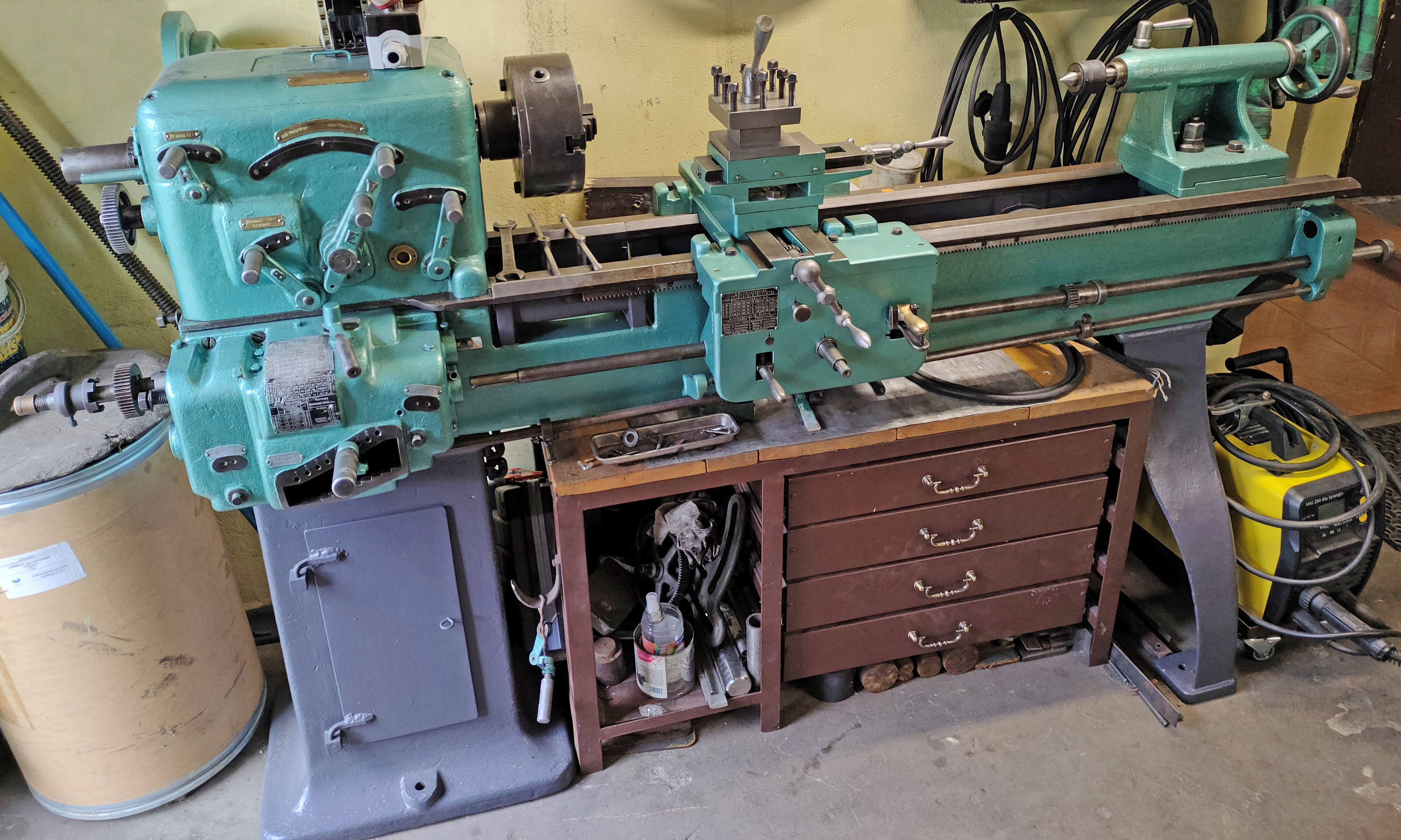|
How many faults can a newly-manufactured gear have? Let's just say that there are rather a lot. The Parkson gear tester was designed to be used both on the production line - to catch faults as they occurred - as well as in the inspection department. The machine could check spur, bevel, spiral and worm gears. Introduced in the 1940s, it continued to be available well into the 1950s, and many are still in service today. |



|
This is the 9-inch between model for sour and helical gears on parallel centres. As an optional extra, as shown fitted, a recording device could be fitted to all models, save for the worm-and-wheel version of the 14 and 36-inch sizes. The recorder traced two lines around a circular chart, the inner line showing the irregularities of the gear, the outer giving the variation from a true circle that a perfect gear would provide. |
||

|
needing the vertically disposed "centre attachment" to hold it secure it between centres |

|
|

|
The 9-inch between centres model equipped for checking worm and wheel gears. The worm was mounted horizontally in bushing as, as in the picture below, between centres. The standard accessory could accommodate worm and wheels gears from 1 inch to 8.5 inches between centres |

|
|

|
The ubiquitous 9-inch model this time set up to check spiral gears. The standard accessory could accommodate spiral gears from 1 inch to 8.5 inches between centres |

|
A special model designed to check motor car crown wheels and pinions. Suitable for either straight or spiral teeth, the machine could take crown wheels up to 15 inches in diameter. This pictures shows the machine fitted with the optional recorder |

|
|

|
A very much larger (1008 lbs / 458 kg) Parkson gear tester fitted with a recorder and designed to take spur and helical gears on parallel axes. This machine was produced as in two models the smaller of which could take gears up to 24 inches in diameter and the larger (shown below) up to 36 inches. It could also be equipped to check spiral gears by a bracket, mounted on an adjustable carriage, that carried a horizontal arbor - or one set to any angle ordered by the customer. |

|
The 36-inch capacity Parkson gear tester fitted with the optional-extra "centre attachment" to hold spur and other gears on parallel centres. The accessory could hold shafts up to 18 inches long with gears up to 11 inches in diameter. With the accessory removed - it was held on by screws - it could hold larger gears as shown by the 24-inch model |

|
The 36-inch capacity Parkson gear tester fitted with the optional-extra "centre attachment" to hold bevel gears. In addition to the usual ruler graduations and vernier fitted to the horizontal slides, they were also fitted to the vertical - this arrangement allowing the distances from the faces of bosses on the gears to the apex of their pitch cones to be read both vertically and horizontally. |

|
The 36-inch capacity Parkson gear tester fitted with the optional-extra attachment to hold worm and wheel and spiral gears. The worm was held in bushes secured by caps, so allowing a quick change from one size to another. The slide was also able to be moved a few degrees either side of horizontal so that the angular contact of the worm threads could be adjusted. The slide's horizontal position was located by a dowel pin and the amount of swivel controlled by a handwheel working through screw thread indicated on a degree scale |
||

|
A picture showing, in detail, the bearings used to support the shaft of the worm. The nearer bearing has its cap removed and the bushing in place. To speed up changes of job a clever system was used - the bearings caps were held on hinged bars and clamped by means of an inclined face that acted as a cam |
